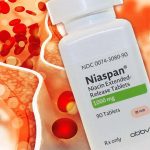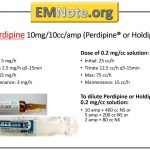
Contents
- 1 Rheumatoid Arthritis vs. Ankylosing Spondylitis
- 1.0.1 Differences between rheumatoid arthritis and ankylosing spondylitis
- 1.0.2 What is rheumatoid arthritis?
- 1.0.3 What are the symptoms of rheumatoid arthritis?
- 1.0.4 What are the treatment options for rheumatoid arthritis?
- 1.0.5 Prevention and outcome of RA
- 1.0.6 What is ankylosing spondylitis?
- 1.0.7 Warning signs of AS
- 1.0.8 What is the treatment of ankylosing spondylitis?
- 1.0.9 Subscribe to MedicineNet’s Arthritis Newsletter
Rheumatoid Arthritis vs. Ankylosing Spondylitis
Rheumatoid arthritis (RA) and ankylosing spondylitis (AS) are chronic, progressive inflammatory disorders that can impair physical fitness.
- They are among the most common types of rheumatic illnesses.
- Their etiology and symptomatology, however, are distinct.
Although both disorders are autoimmune diseases, various distinctions are made to differentiate them.
Differences between rheumatoid arthritis and ankylosing spondylitis
- AS starts as back pain, hip pain, and/or shoulder pain.
- Eye symptoms associated with AS include redness, light sensitivity, and impaired vision.
- Bone erosions.
- RA is characterized primarily by inflammation and rigidity of the joints, predominantly in the extremities, particularly the hands and feet.
- RA is differentiated by involvement of both joints on both sides.
- Bone overgrowth.
- AS is distinguished by its effect on the mobility of the spine and sacroiliac joints. It causes increased inflammation and rigidity of the spine and its components.
- In the long run, AS may promote vertebrae fusion and a bent posture.
What is rheumatoid arthritis?
Rheumatoid arthritis (RA) is an autoimmune illness where the body’s immune system mistakenly damages the synovium (the thin membrane that lines the joints).
- Pain, swelling, and stiffness are symptoms of chronic inflammation. Over time, RA can cause bone and joint deterioration, resulting in disability.
- RA usually affects both sides of the body equally, so if a joint on one side is damaged, the same joint on the opposing side is also affected.
- Wrists, fingers, knees, feet, ankles, and elbows are the most typically affected locations.
- Other organs can be affected by RA, and people with RA are more likely to acquire disorders such as heart disease, diabetes, and osteoporosis.
What are the symptoms of rheumatoid arthritis?
Symptoms of RA frequently arise gradually over several weeks. Some cases can move swiftly over days. Symptoms differ from person to person.
Symptoms of joint disease include:
- Pain:
- RA can cause joint stiffness. The patient may be unable to fully bend their fingers or make a fist if hands are affected.
- When RA affects a joint, the joint lining becomes inflamed, causing swelling, warmth, and redness.
- As a result, the joints may enlarge, become hot, and painful to the touch or both. In certain people, firm swellings known as rheumatoid nodules can grow under the skin around damaged joints.
Patients with RA experience various more general symptoms, including:
- Tiredness and lack of energy
- Fever
- Sweating
- Poor appetite
- Weight loss
What are the treatment options for rheumatoid arthritis?
Treatment options for RA include:
- In the early stage:
- Controlling inflammation is critical at all stages of RA, but minimizing it early gives the best chance of avoiding joint damage.
- A low-dose steroid paired with a low-dose disease-modifying antirheumatic drug (DMARD) frequently offers the best management.
- Combine these drugs with lifestyle changes to limit the progression of the condition.
- Steroid injections may be used as a treatment option.
- Biologic DMARDs and genetically modified proteins to suppress a component of the immune system may be prescribed.
- Physical activity is an essential part of the healing process. Certain patients may require physical rehabilitation before beginning self-administered muscle-strengthening aerobic exercises.
- Treatment choices are indicated on a case-by-case basis. The orthopedic surgeon may explore the potential of joint replacement.
- Other surgical procedures include arthrodesis (also known as joint fusion) and tendon repair.
- Cognitive behavioral therapy has benefited patients with chronic pain, assisting them in identifying pain triggers and providing coping methods to improve the overall quality of life.
- Pain relievers, muscle relaxers, and low-dose antidepressants are frequently used in combination. Joint replacement solutions may be prescribed to restore mobility and lessen the need for pain medications.
Regardless of the stage, a person is in, their symptoms may persist for a long period. They could go into total remission or flare up and worsen unexpectedly.
Drugs That Slow
RA’s Progress
Prevention and outcome of RA
- RA can be prevented from worsening if diagnosed early and adequate treatment is started as soon as feasible.
- It takes time and significant research to determine the best treatment strategy for each patient.
- Untreated or undiagnosed patients with RA are at high risk of joint degradation, poor long-term outcomes, and cardiovascular disease.
- Pay attention to our body and be able to recognize a flare when it arises to treat it as quickly as possible with medication changes and self-management techniques.
- Although there is no cure for RA, medicines and lifestyle modifications can help manage symptoms.
- Alternative and complementary therapies can help relieve symptoms, but only conventional medications can stop the disease’s progression and prevent further joint damage.
- Medication can help put RA into remission in some cases, and symptoms may disappear completely in others.
What is ankylosing spondylitis?
Ankylosing spondylitis (AS) is a type of arthritis that mostly affects the spine and causes inflammation in the back. The illness affects the shoulders, hips, ribs, heels, and other joints. It is a systemic disease, which means that it affects more than only bones and joints.
- AS causes swelling of the vertebrae in the spine, resulting in severe and chronic pain, stiffness, and discomfort.
- The growth of new bone tissue in the spine causes portions of the spine to fuse in a fixed and immobile position. Over time, the spine becomes less flexible, resulting in a leaned forward posture.
- According to rheumatologists, there is a significant delay in AS diagnosis. If left untreated, inflammation can cause reduced mobility, potentially leading to the patient becoming bedridden or wheelchair-bound.
Warning signs of AS
- Persistent and agonizing pain in the lower back, heel(s), joints, or chest, particularly after waking up in the morning for more than 90 days, is a warning sign.
- Using nonsteroidal anti-inflammatory drugs (NSAIDs)/pain relievers may provide relief from issues.
- Pain and stiffness, particularly in the lower back and hips (sacroiliac joint), especially in the mornings or after long periods of inactivity, are early signs and symptoms of AS.
- Other joints in the body may experience stiffness, irritation, and pain. Shoulders, neck, hips, ribs, heels, and minor hand and foot joints may be affected.
- Weight loss, fever, tiredness, and inflammation are all frequent systemic symptoms.
- Enthesitis, which is inflammation of bone-attached ligaments, tendons, and capsules, primarily in the spine but also in the back of the foot (Achilles tendon) and cartilage between the breastbone and ribs, is a common sign.
What is the treatment of ankylosing spondylitis?
AS can be treated conservatively or surgically, depending on the signs and symptoms and the patient’s medical state.
- Medications for symptom alleviation:
- NSAIDs/pain relievers provide relief from inflammation, discomfort, and stiffness.
- Normally, surgery is not necessary in most AS cases; however, in more advanced stages with considerable discomfort, the doctor may recommend it. Repair or replacement of damaged joints (hip/knee) and tendons is possible.
- Exercises are proven to be the most effective in AS. They are intended to increase flexibility and range of motion.
- Stretching and strength-building exercises are advised to improve posture and strength.
- Proper sleeping and walking positions, as well as stomach- and back-strengthening activities, are intended to improve or eliminate the leaned forward posture and keep the patient upright.
- Deep breathing exercises are advised. Swimming is recommended as a form of exercise because it has been demonstrated to be effective in patients with AS. It aids in reducing pain and improving posture and respiration.
The progression of each of these disorders is difficult to predict. Signs and symptoms of AS and rheumatoid arthritis (RA) may recur and then subside.
RA and AS, like any other autoimmune or rheumatic disease, are indistinguishable ailments that have disrupted people’s lives. The course of an affected individual’s life is radically altered because of chronic pain and eventual disability. Supportive care is required to reduce the pain caused by these illnesses.
Previously, AS was frequently misdiagnosed as RA. Thanks to advanced laboratory tests and imaging, there are no major diagnostic difficulties in distinguishing between these disorders today. Research suggests that the coexistence of RA with AS is rare.
Subscribe to MedicineNet’s Arthritis Newsletter
By clicking "Submit," I agree to the MedicineNet Terms and Conditions and Privacy Policy. I also agree to receive emails from MedicineNet and I understand that I may opt out of MedicineNet subscriptions at any time.


